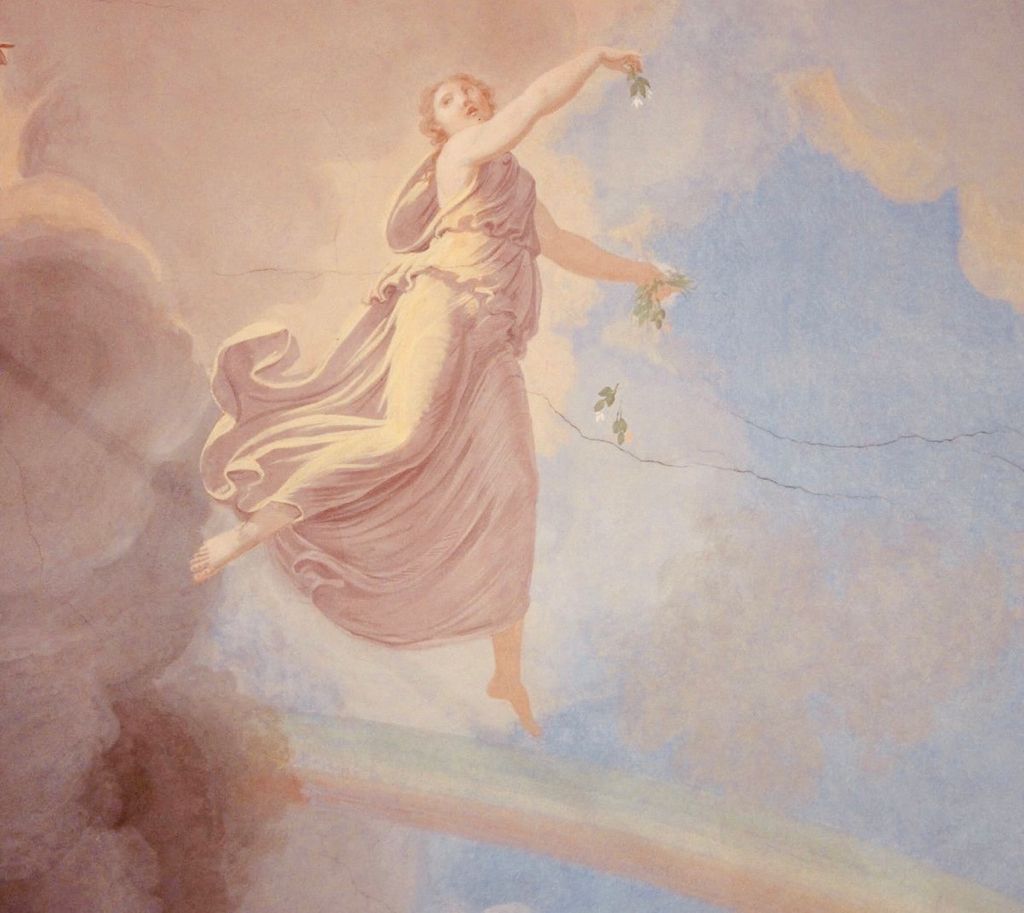
To love beauty is to see the light.
The renown French author Victor Hugo (1802-1885) reflected on the bliss of beauty that strikes the eye, and said : To love beauty is to see light. Nearly a century after Victor Hugo, Yuri Gagarin (1934-1968), the first man who traveled to space in 1961, expressed in awe as he gazed across the cosmos :
Rays were blazing through the atmosphere of the earth, the horizon became bright orange, gradually passing into all colors of the rainbow: from light blue to dark blue, to violet and then to black. What an indescribable gamut of colors ! Just like the paintings of the artist Nicholas Roerich (1874-1947).

Ancient Greeks, revering the beauty of the gamut of colors reflected in the rainbow, named Iris as its goddess. Just as the rainbow links the earth to the heavenly skies above, Iris is entrusted with linking humans to the deities. She is said to ride on the rainbow as she moved swiftly at the speed of wind from one end of the world to the other, into the depths of the sea, and even to the underworld. Iris is also believed to intercede in the fulfilment of humans’ prayers, either by fulfilling them herself or by bringing them to the attention of other deities.

She is attributed the virtues of hope, faith and dignity. The same qualities are attributed to the iris flower.
Inspiring many storytellers and artists, the flower is a beauty unto itself with silky petals, radiant colors and a solid stem standing up right. Since it springs up from its original bulb year after year, it has an immortal quality.

The fine lines inlaying the inner part of the petals exactly resemble to the iris of the human eye which gives the eye its color. Determined by the pigment cells, each person’s iris has a distinct color, texture, and pattern. It is also the critical doorway allowing light to enter the eye.

A circular muscle in the iris controls the amount and intensity of light the eye is to absorb by dilating and contracting the pupil located in its center.
When a spectrum of light strikes the iris, it emanates all colors that the human eye can see; we glimpse the colors of the rainbow. The iris, like a camera, instantaneously takes pictures of the images cast under this beam of light. The photosensitive cells of the lens and the retina lying behind the iris convert these light images into electrical signals that are carried to the brain by a special optic nerve. The “ I can see ! ” moment happens in the blink of an eye, when light finds its way in through the iris.
As for people who had lost or never have had vision, neuroscience and fMRI scans commonly report that another window opens in their brain. Through this window, they can imagine colors, visualize objects, and amass knowledge as they roam through. For they are endowed with more profound sensational fields than what the naked eye can grasp on its own.
On the hermeneutic meaning of “seeing”, the sages of the past have said :
There is no veil of darkness for the eye that sees. For the eye which does not see, what good is light …
Making the allegory that eyes are windows of the soul, they inferred that the light within is emanated from the soul and is projected in the eye. Then the veils are lifted and one is apt to “see” the true reality with the eyes of the soul.
Anaïs Nin distinguished this lucid quality :
When you possess light within, you see it externally.
True faith, dignity and immortality attributed to the Greek goddess and the iris flower might as well be reflected in the light of the human eye.
Duygu Bruce







